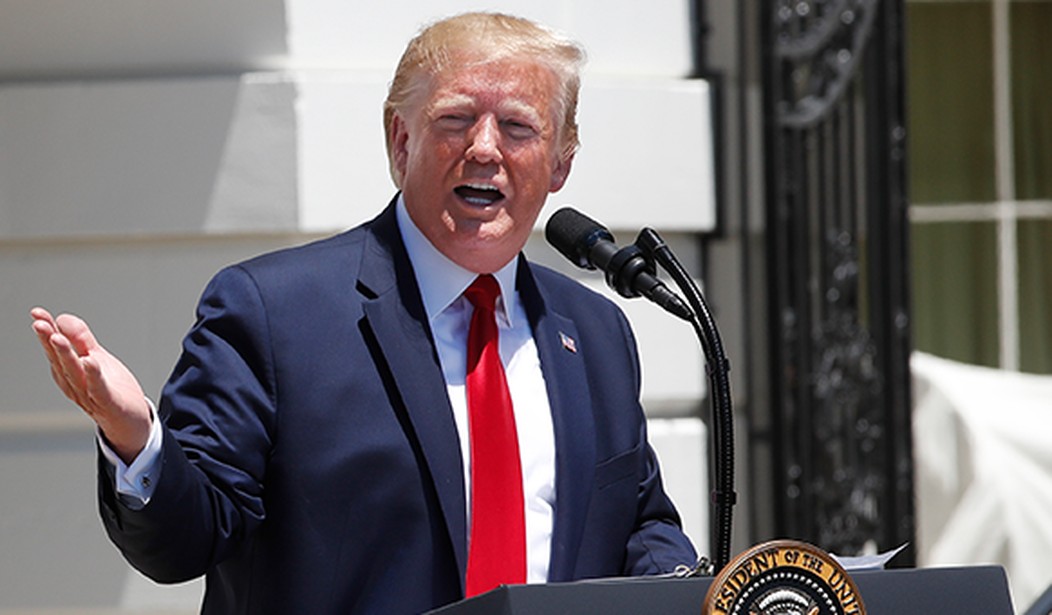President Trump’s recent decision to avoid entering into a likely disastrous military engagement with Iran marks a welcome return to the commander-in-chief’s populist, DC-skeptical style from the 2016 campaign trail.
To quickly recap, after Iranian military forces shot down a US drone that they (unconvincingly) claimed had violated Iranian airspace, the Trump administration initially looked prepared to launch military strikes against the foreign adversary. However, at the last moment, President Trump called the strikes off, citing his desire “not to kill a lot of Iranians.” Since this move, Trump has predictably talked up the US’s capacity to quickly win a war with Iran, while also promising – to the great relief of his more war-weary supporters – that he has no intention of putting American lives at risk if such a war happened. In fact, Trump has explicitly disavowed any desire to “put boots on the ground.”
From an administration whose foreign policy has increasingly appeared to emanate less from Trump himself than from his much more hawkish national security adviser John Bolton, all this has been a pleasant surprise. In fact, as already alluded, it reminds one of April 2016, when then-candidate Trump announced to the world that he would “never send our finest into battle until necessary, and I mean absolutely necessary, and will only do so if we have a plan for victory with a capital V.” In this case, to hear Trump tell it, he hardly lacked the second element – a plan for victory. Rather, what was missing was the absolute necessity.
Given Trump’s famously (if often refreshingly) mercurial nature, who knows if such a return to 2016 form will last. However, on the off-chance that Trump is looking to re-establish his dovish bona fides once again, he might consider starting by not only saving American lives, but also American money, by taking a hard look at wasteful spending at the Department of Defense.
Recommended
He will not have far to look. As of 2015, a report showed the Defense Department wasting $125 billion a year, and suggested a way to slash 15-20 percent of the budget, period. The department tried unsuccessfully to bury the report, only to have it unearthed to much embarrassment by the Washington Post. A similar report by the Government Accountability Office also targeted the Department’s “renewable energy” projects, finding that only two out of 17 of the programs were actually capable of providing power. Taking a hard look at programs like this would fit nicely with the president’s swamp draining ethos, and iconoclasm about projects motivated more by elite preferences than by actual necessity.
And then, there are the projects that have been over-budget for so long they’re practically places where money goes to die. Perhaps the most notable of these is the infamous F-35 Joint Strike Fighter plane, an ostensibly “invisible” fighter jet that is actually only invisible insofar as no functioning prototype can be seen, because none exists. Pilots routinely throw up after flying it, that is, if they can get through the crippling ear and sinus pain. Futurism has described the prototypes that do exist as “almost unflyable.” And so far, the money spent on trying to make the plane work numbers over a $1 trillion. 2009 called; it wants the Cash for Clunkers program back.
President Trump was once a skeptic of the program, singling it out in an interview with radio host Hugh Hewitt as an example of wasteful defense spending he would eliminate. But, due to some sweet talk by Lockheed Martin CEO Marillyn Hewson, Trump has apparently reversed himself and now believes the plane is actually invisible. He has even begun using it as a bargaining chip in negotiations with foreign adversaries, which if he plans to hoodwink America’s enemies with useless technology, is fine, but $1 trillion seems an awfully high price tag for a head fake. Or, given the F-35’s barely functional flight during the president’s 4th of July address, a glorified parade float.
Whatever the fate of these and other programs like them, Trump is to be commended for his brief return to his 2016 skepticism of the Washington foreign policy consensus that no provocation is too small for a full-scale war. However, if he really wants to prove he’s the old Trump of the campaign trail again, these are just some starting points for ways he could look at spending American taxpayer money on projects that actually help American taxpayers other than the heads of a few elite defense contractors. That is, after all, what “America First” is supposed to mean, right?

























Join the conversation as a VIP Member